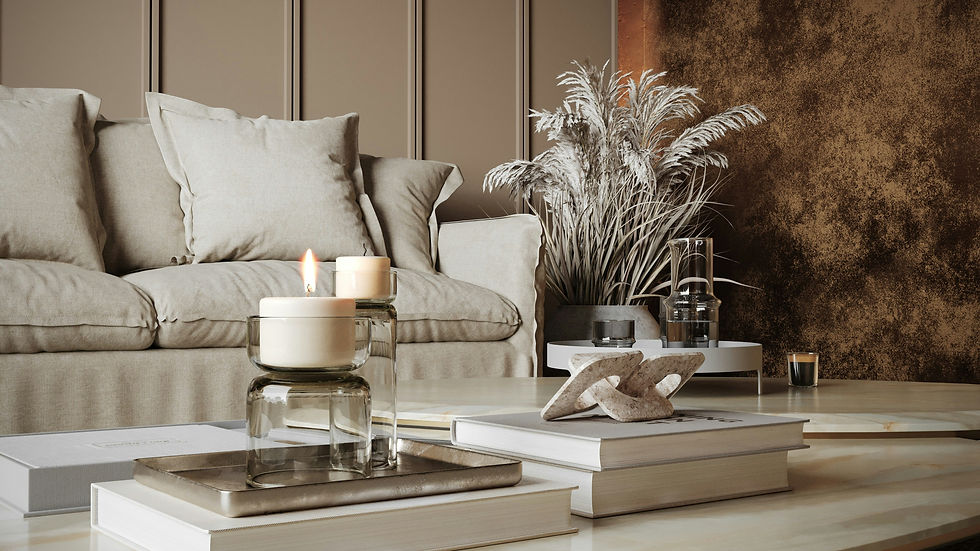Transforming Spaces: The Impact of Interior Styling on Flipping Houses
- Javoris Pollard
- Sep 16
- 4 min read
Flipping houses offers a profitable opportunity for those interested in real estate investment. This process involves buying a property, renovating it, and then selling it for a profit. While the structural integrity of a home matters, the impact of interior styling is often what truly elevates a property’s appeal. This post examines how thoughtful interior design can not only boost a flipped house’s value but also attract more buyers.

The Role of Interior Styling in Home Flipping
Interior styling goes beyond arranging furniture; it’s about crafting a welcoming environment that draws in potential buyers. When flipping houses, you want to showcase the property’s best qualities and make it attractive and desirable. A well-styled home can trigger emotions that encourage buyers to picture themselves living in the space.
The right design choices can overhaul an outdated property, turning it into a chic and modern home. For example, updated finishes and neutral color schemes can increase a property’s perceived value, making it more appealing to buyers. A home that looks move-in ready often commands a higher price tag, with some buyers willing to pay over 10% more for finely styled properties.
Understanding Buyer Preferences
Knowing your buyer is key to effective interior styling. Different demographics have unique styles and priorities. For instance, young families may look for open, functional layouts with kid-friendly features, while young professionals often desire sleek designs with modern finishes.
Researching local market trends can yield valuable insights and help you tailor your styling choices to fit buyer demands. For instance, according to a National Association of Realtors report, homes staged to appeal to specific demographics sell 73% faster than non-staged homes.
Key Elements of Effective Interior Styling
Color Schemes
Selecting the right color palette is crucial. Neutral tones generally appeal to wider audiences, serving as a blank canvas for potential buyers to picture their own tastes. Shades like soft whites, grays, and beiges can make spaces feel larger and more inviting.
Conversely, bold colors can create focal points when used sparingly. A vibrant accent wall in a living room or colorful accessories can catch the eye without overwhelming the overall design. Research indicates that homes with fresh, modern color schemes sell 30% faster.
Furniture Selection
The furniture you choose greatly influences a home’s ambiance. Picking pieces that align with the architectural style enhances the overall aesthetic. For example, mid-century modern furniture can complement a contemporary space, whereas rustic or farmhouse-style pieces may be better suited to a more traditional home.
Arranging furniture to optimize flow and space is essential. For an open layout, positioning seating to encourage conversation while maintaining pathways can enhance the feel of spaciousness. Homes with thoughtful furniture arrangements often receive higher offers, as buyers see the potential for enjoyment in the space.
Staging for Success
Staging is a vital step in the flipping process. This involves arranging furniture and decor to highlight a home’s best features. Effective staging helps buyers visualize the potential of a space, increasing the likelihood of a swift sale.
Investing in professional staging can significantly pay off. Homes that are staged sell 20% faster and at a 10% higher price on average. If you're on a budget, effective DIY staging can still make a positive impact. Simple strategies like decluttering, using mirrors to create depth, and adding fresh flowers can elevate the home's appeal.
The Financial Impact of Interior Styling
Investing in quality interior styling can lead to notable financial rewards. Staged homes often sell for up to 20% more than their non-staged counterparts. Additionally, the cost of styling can be surprisingly low compared to the significant return it can generate. For example, spending $1,500 on new paint and light fixtures can potentially increase a home's sale price by $15,000 or more.
By making small but impactful updates, such as fresh paint or updated hardware, flippers can enhance a property's attractiveness without hefty expenses.
Trends in Interior Styling for Flipped Houses
Staying on top of current trends can give flippers a competitive edge. Here are key trends to consider:
Sustainable Materials: Increasingly, buyers gravitate towards eco-friendly materials. By incorporating sustainable options, you not only appeal to environmentally-aware buyers but also improve your home's marketability.
Smart Home Features: Technology integration is in demand. Features like smart lighting and thermostats enhance convenience and attract tech-savvy buyers.
Open Spaces: The preference for open floor plans remains strong. Creating seamless transitions between living areas can boost a home's perceived value and functionality.
The Transformative Power of Interior Styling
In house flipping, interior styling is a game-changer with the potential to elevate a project’s success. By understanding buyer trends, employing effective design elements, and marking your property with current styles, you can create a space that captivates potential buyers and commands top dollar.
As the real estate market evolves, the value of skilled design in home flipping will remain a crucial factor in achieving profitability. Embracing the principles of interior styling can unlock the full potential of your properties, transforming them from basic renovations into remarkable makeovers.




Comments